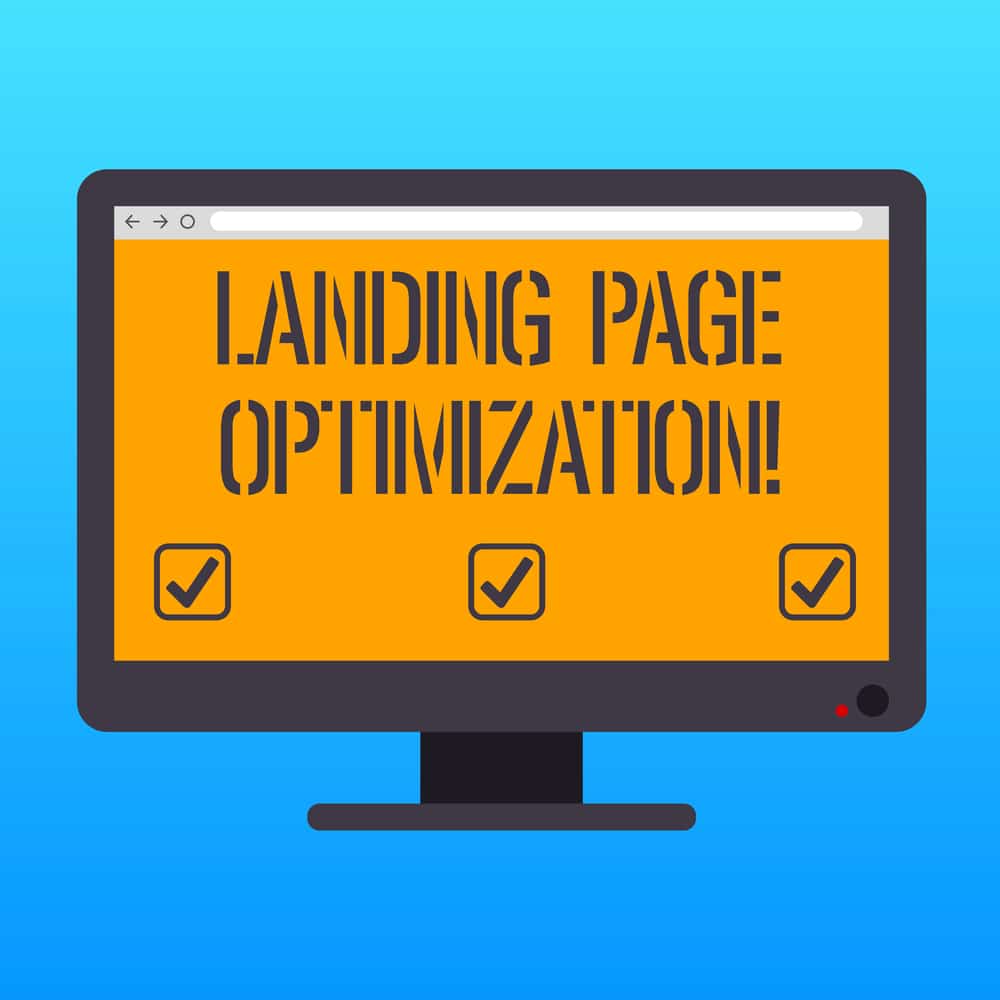Drive Local Traffic: A Guide to Targeted Location-Based Landing Pages
In today’s digital landscape, local searches dominate. Consumers are constantly turning to their smartphones and computers to find businesses “near me”—from the nearest coffee shop to a reputable local plumber. This surge in local search activity presents a huge opportunity for businesses with physical locations, but only if they’re equipped to capture this targeted traffic. A generic website simply won’t cut it. Sending local searchers to a page that doesn’t speak directly to their location and needs is like inviting guests to a party without giving them the address. They’ll likely get lost and give up. That’s where the power of location-based landing pages comes in. These highly targeted pages are designed to provide a tailored experience for users searching within specific geographic areas. By offering relevant content, local contact information, and customized offers, location-based landing pages not only improve your local SEO and visibility in search results but also significantly enhance user experience and, most importantly, drive higher conversion rates. This guide will walk you through the essential elements of creating effective location-based landing pages that attract local customers and boost your bottom line.
Why Location-Specific Landing Pages Matter
Location-specific landing pages are more than just a nice-to-have; they’re a crucial component of any effective local marketing strategy. Their impact can be felt across several key areas:
- Improved Local SEO: In the world of search engine optimization, relevance is king. Location-specific landing pages allow you to target specific geographic areas with laser-like precision. By incorporating location-based keywords and information, you signal to search engines that your business is highly relevant to users searching in that area. This increased relevance directly translates to improved visibility in local search results, especially for those crucial “near me” searches. When someone searches for “best pizza near me,” they expect to see results for pizzerias in their immediate vicinity. Location-specific landing pages ensure your business appears in those results, capturing valuable local traffic.
- Enhanced User Experience: Imagine searching for a local service and landing on a generic page that provides no specific information about your area. It’s frustrating, right? Location-specific landing pages eliminate this frustration by providing users with exactly what they’re looking for: relevant local information. This includes details like local addresses, phone numbers, business hours, and even information about the surrounding neighborhood. By meeting user expectations for local information, you create a more positive and engaging experience, encouraging them to explore your offerings further.
- Increased Conversion Rates: Ultimately, the goal of any marketing effort is to drive conversions. Location-specific landing pages are highly effective at achieving this because they cater directly to local needs and preferences. When someone performs a local search, they typically have a high purchase intent. They’re actively looking for a product or service in their area and are ready to take action. By providing tailored content, local offers, and clear calls to action, you make it easy for these users to convert. For example, a local bakery might offer a special discount for customers in a specific neighborhood, driving more local foot traffic and sales. This targeted approach significantly increases the likelihood of turning local searchers into paying customers.
Key Elements of Effective Location-Specific Landing Pages
Creating a truly effective location-specific landing page requires careful attention to several key elements that work together to provide a seamless and compelling user experience. Here’s a breakdown of the essential components:
- Relevant Content: The content on your landing page should resonate deeply with local users. This means more than just mentioning the city name a few times. Integrate location-specific keywords naturally throughout the page copy. Instead of generic phrases like “best dentist,” use more targeted phrases like “best dentist in [City]” or “top-rated family dentist near [Neighborhood].” Go beyond keywords and incorporate details that are relevant to the local community. Mention nearby landmarks, prominent neighborhoods, upcoming community events, or local attractions. This not only reinforces your local relevance but also helps users connect with your business on a more personal level. Finally, showcase local testimonials, case studies, or reviews. Hearing positive feedback from other local customers builds trust and credibility.
- Location-Specific Contact Information: Accurate and easily accessible contact information is paramount. Display the correct NAP (Name, Address, Phone number) for each location you’re targeting. Ensure this information is consistent with your Google My Business profile and other online directories. Embed a Google Map with an accurate pin placement to make it easy for users to find your business. This is especially important for mobile users who may be looking for directions. Clearly display business hours for each location, so users know when they can visit or contact you.
- Local Offers and Promotions: Tailoring your offers and promotions to specific locations can be a powerful driver of conversions. Feature deals, discounts, or promotions that are relevant to the local market. For example, a restaurant might offer a “lunch special” only available at their downtown location. Highlighting local events, partnerships with other local businesses, or sponsorships of local teams can further enhance your local connection and attract customers.
- Localized Images and Videos: Visuals play a crucial role in capturing attention and conveying your message. Use high-quality images and videos that showcase the local area, your specific business location, or your local team. Avoid generic stock photos at all costs. They lack authenticity and can actually detract from your message. Instead, use photos of your actual storefront, local staff interacting with customers, or videos showcasing your products or services in a local context.
- Clear Call-to-Action (CTA): A strong call to action tells users exactly what you want them to do. On location-specific landing pages, your CTAs should also be location-specific. Instead of a generic “Contact Us,” use more targeted phrases like “Get a free quote in [City],” “Visit our [Location] showroom,” “Schedule an appointment near you,” or “Find directions to our [Neighborhood] location.” This clarity helps guide users through the conversion process and increases the likelihood of them taking the desired action.
SEO Optimization for Location-Specific Landing Pages
Creating compelling content and a user-friendly experience is only half the battle. To truly maximize the effectiveness of your location-specific landing pages, you need to optimize them for search engines. This ensures that your pages are visible to local customers searching for your products or services. Here’s how to optimize your location-based landing pages for SEO:
- Keyword Research: Thorough keyword research is the foundation of any successful SEO strategy. For location-specific landing pages, your focus should be on local keywords. Use keyword research tools like Google Keyword Planner, Ahrefs, SEMrush, or Moz Keyword Explorer to identify relevant search terms that include location modifiers. For example, instead of just “plumber,” research keywords like “plumber in [City],” “emergency plumber near [Neighborhood],” or “best plumbing services in [County].” Pay particular attention to long-tail keywords, which are longer, more specific phrases that often have lower competition and higher conversion rates. For instance, “affordable drain cleaning services in downtown [City]” is a long-tail keyword.
- On-Page Optimization: Once you’ve identified your target keywords, it’s time to implement them strategically on your landing page. This is known as on-page optimization.
- Title Tags: Optimize your title tags with your primary location-based keyword. The title tag is the clickable headline that appears in search results, so it’s crucial for attracting clicks. Example: “[City] Plumbing Services | Reliable & Affordable | [Business Name]”
- Meta Descriptions: Write compelling meta descriptions that accurately describe the page’s content and include relevant location keywords. The meta description is the short snippet of text that appears below the title tag in search results. It should entice users to click through to your page.
- Header Tags (H1-H6): Use header tags to structure your content and highlight important keywords. Your H1 tag should typically include your primary location keyword, while H2-H6 tags can be used for supporting keywords and subtopics.
- Image Alt Text: Optimize image alt text with descriptive keywords that include location information. This helps search engines understand the content of your images and improves accessibility for users with visual impairments. Example: “Technician repairing a leaky faucet in a [City] home.”
- Schema Markup: Schema markup is code that you add to your website to help search engines understand the context of your content. Implementing local business schema markup is crucial for location-specific landing pages. This markup provides search engines with structured data about your business, such as your name, address, phone number, business hours, and more. This information can then be displayed in rich snippets in search results, making your listing more prominent and informative. You can find resources and tools to help you implement schema markup on websites like Schema.org or Google’s Structured Data Markup Helper.
- Google My Business (GMB) Integration: Your Google My Business profile is a vital component of your local SEO strategy. It’s essential to ensure that your NAP (Name, Address, Phone number) is consistent across your landing page and your GMB profile. Any inconsistencies can confuse search engines and negatively impact your ranking. Furthermore, link your location-specific landing page to the corresponding GMB profile. This helps connect the online dots and reinforces your local relevance. You can add the URL of your location page directly within the Website field of your GMB profile.
- Mobile Optimization: Mobile devices are the primary tool for local searches. Therefore, ensuring your landing pages are mobile-friendly is absolutely essential. Your landing pages should be responsive, meaning they adapt seamlessly to different screen sizes and devices. Use Google’s Mobile-Friendly Test tool to check if your pages are mobile-friendly and address any issues that are identified. A positive mobile experience is not only crucial for SEO but also for user satisfaction and conversions.
Promoting Your Location-Specific Landing Pages
Creating optimized location-specific landing pages is a great first step, but they won’t drive traffic if no one knows they exist. Promoting these pages is crucial for maximizing their impact and reaching your target audience. Here’s how to effectively promote your location-based landing pages:
- Local SEO and Citations: Building local citations is a cornerstone of local SEO. Citations are online mentions of your business’s NAP (Name, Address, Phone number) on other websites. These mentions help search engines verify your business information and improve your local search ranking. Focus on building citations on reputable online directories relevant to your industry and location. Examples include:
- General Business Directories: Google My Business (essential!), Bing Places for Business, Apple Maps, Yelp, Yellow Pages, Better Business Bureau (BBB)
- Industry-Specific Directories: Healthgrades (for healthcare professionals), Avvo (for lawyers), TripAdvisor (for restaurants and hotels)
- Local Chamber of Commerce Websites
- Local Business Associations
- Ensure your NAP is consistent across all citations to avoid confusion for search engines.
- Paid Advertising (Local PPC, Social Media Ads): Paid advertising can be a highly effective way to drive targeted traffic to your location-specific landing pages.
- Local PPC (Pay-Per-Click): Platforms like Google Ads allow you to target your ads to users searching for specific keywords in specific geographic locations. You can set up location targeting within your campaigns to ensure your ads are only shown to users in your target area. This allows you to drive highly qualified leads to your location-specific landing pages.
- Social Media Ads: Social media platforms like Facebook, Instagram, and LinkedIn also offer powerful targeting options, including location-based targeting. You can target your ads to users based on their location, demographics, interests, and behaviors. This allows you to reach a highly specific local audience and drive them to your relevant landing pages.
- Social Media Marketing: Social media is a valuable tool for engaging with local customers and promoting your location-specific landing pages.
- Share location-specific content: Create posts that are relevant to each of your locations. This could include local events, promotions specific to that location, photos of the local team, or information about the surrounding neighborhood.
- Encourage local engagement: Run contests or giveaways targeted at specific locations. Encourage customers to check in at your location on social media. Respond to comments and messages promptly and engage with local conversations.
- Promote your landing pages: Share links to your location-specific landing pages in your social media posts and encourage users to visit them for more information or to take advantage of local offers.
- Email Marketing: Email marketing can be a highly effective way to nurture leads and drive conversions.
- Segment your email lists: Segment your email lists based on location to send targeted promotions and updates to customers in specific areas.
- Send targeted promotions: Promote location-specific offers, events, and news to your segmented email lists. This ensures that your subscribers receive relevant information that is likely to resonate with them.
- Link to landing pages: Include clear calls to action and links to your location-specific landing pages in your emails. This makes it easy for subscribers to learn more or take advantage of your offers.
Tracking and Measuring Results
Implementing location-specific landing pages is only effective if you can track their performance and measure their impact on your business. By monitoring key metrics, you can identify what’s working, what’s not, and make data-driven decisions to optimize your strategy. Here’s how to track and measure the results of your location-based landing pages:
- Google Analytics: Google Analytics is an invaluable tool for tracking website traffic and user behavior. For location-specific landing pages, it allows you to gain insights into how users are interacting with each page and whether they’re taking the desired actions. Here are some key metrics to track:
- Page Views: This metric shows you how many times each landing page has been viewed. It gives you a general idea of the page’s popularity.
- Bounce Rate: The bounce rate represents the percentage of users who leave your page after viewing only one page. A high bounce rate could indicate that the page isn’t relevant to the user’s search or that there are issues with the page’s design or content.
- Conversion Rate: This is arguably the most important metric. It measures the percentage of users who complete a desired action, such as filling out a form, making a purchase, or calling your business. Tracking conversion rates for each location-specific landing page allows you to see which locations are performing best.
- Time on Page: This metric shows you how long users are spending on each page. A longer time on page generally indicates higher engagement and interest.
- Traffic Sources: Understanding where your traffic is coming from is crucial. Google Analytics can tell you if users are finding your landing pages through organic search, paid ads, social media, or other sources. This information helps you allocate your marketing budget effectively.
- Goal Completions: Set up goals in Google Analytics to track specific actions, such as form submissions or phone calls. This allows you to directly measure the effectiveness of your landing pages in driving desired outcomes.
- Call Tracking: While Google Analytics provides valuable online data, it doesn’t directly track phone calls. This is where call tracking software comes in. Call tracking assigns unique phone numbers to each of your marketing channels, including your location-specific landing pages. When someone calls one of these unique numbers, the call tracking software records the call and attributes it to the specific source.
- Attributing Phone Calls to Specific Landing Pages: This is the key benefit of call tracking for location-based landing pages. By assigning a unique phone number to each page, you can directly see which landing page generated each phone call. This provides valuable insights into which locations are driving the most phone inquiries and allows you to optimize your landing pages for better call conversions. Call tracking also often provides additional data such as the caller’s location, the keywords they searched (if applicable), and even call recordings, providing even more context to your marketing efforts. This data allows for more accurate measurement of ROI and helps justify marketing spend.
Conclusion
In today’s competitive digital landscape, generic marketing efforts simply don’t cut it, especially for businesses targeting local customers. Location-specific landing pages offer a powerful solution, providing a tailored and relevant experience that drives results. As we’ve explored, these targeted pages offer a multitude of benefits: they significantly improve local SEO and visibility in “near me” searches, enhance user experience by providing relevant local information, and ultimately, boost conversion rates by catering to local needs and preferences.
From crafting compelling location-based content and ensuring accurate contact information to optimizing for search engines and promoting your pages across various channels, implementing the strategies discussed in this guide is crucial for maximizing your local marketing ROI. By focusing on these key elements, you can create high-performing landing pages that attract local customers, generate leads, and drive sales.
Ready to take your local marketing to the next level? Local View specializes in helping businesses like yours create and optimize high-converting location-specific landing pages and implement effective local SEO strategies. Contact us today for a free consultation and discover how we can help you drive more local traffic and achieve your business goals.





